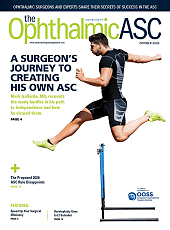
The registration study of IBI311 in Thyroid Eye Disease (RESTORE-1) study, recently published in JAMA Ophthalmology, represents a vital contribution to the evolving therapeutic landscape of thyroid eye disease (TED), noted Caroline Vloka, MD, and Sophie D. Liao, MD, in their commentary on the study in JAMA Ophthalmology.
The phase 3, placebo-controlled, randomized clinical trial evaluated the efficacy and safety of IBI311, a treatment targeting the insulin-like growth factor 1 receptor (IGF-1R), in Chinese patients with active, moderate to severe TED.
By including an exclusively East Asian population, Drs. Vloka and Liao said RESTORE-1 strengthens the clinical evidence supporting IGF-1R inhibition for the treatment of TED and broadens its potential application to diverse ethnic groups.
The trial’s main outcome measure was proptosis response, defined as a reduction of 2 mm or more in the study eye. Among the 82 enrolled participants, 85.8% of patients treated with IBI311 achieved this endpoint, compared with only 3.8% of those in the placebo group. This result, they said, is nearly identical to the 83% reported in the phase 2/3 study in 2017, which identified teprotumumab as a treatment option for patients with TED.
According to Drs. Vloka and Liao, a main strength of the RESTORE-1 trial lies in its focus on an ethnically distinct cohort. For example, they said, in the original teprotumumab trials, only a small percentage of participants identified as Asian, and data specific to how this population responds to IGF-1R inhibition in TED were sparse. This underrepresentation, they said, posed a critical limitation, given that the clinical manifestations of TED vary substantially across ethnic groups. In East Asian patients, they explained, TED-related proptosis tends to be less detectable, and compressive optic neuropathy may occur earlier in the disease course, often with less overt periorbital inflammation.
Additionally, they explained, while inferior rectus muscle involvement is more typical in White populations, medial rectus enlargement is often observed first in Asian patients, leading to a different pattern of strabismus and diplopia.
By demonstrating a robust therapeutic response in Chinese patients, Drs. Vloka and Liao said RESTORE-1 offers important confirmation that IGF-1R inhibition is effective even in the context of these anatomical and clinical variations. This validation is crucial, they said, for informing practice in regions where TED may present differently and for designing future trials that reflect a broader range of patient populations.
Drs. Vloka and Liao pointed out that while there was a trend toward improvement in examination results, the trial may not have had a sufficient number of study participants to state confidently that there was or was not a difference in changes in diplopia between the groups. Additionally, they said, no patients had compressive optic neuropathy, precluding any conclusions about efficacy in this severe and vision threatening disease cohort. The relatively short 24-week follow up period, they explained, also limits interpretation of long-term durability, relapse rates, or need for retreatment.
Finally, Drs. Vloka and Liao said, while adverse events were generally consistent with prior IGF-1R studies, the incidences of hearing-related events (20.4%) and menstrual irregularities were notable and should prompt further surveillance.
Drs. Vloka and Liao concluded that while future research is needed to evaluate long-term outcomes and to explore the potential role of IGF-1R therapy in ethnically diverse patients with compressive optic neuropathy or fibrotic disease, RESTORE-1 offers an alternative path toward disease modifying treatment.








